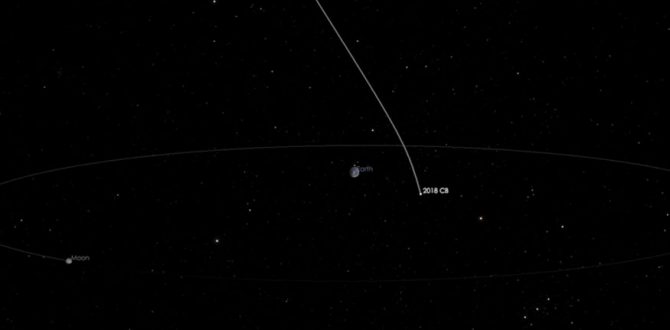Measuring between 50 and 130 feet (15 and 40 meters) across, the asteroid’s trajectory will carry it safely past the Earth with no chance of an impact, said Paul Chodas, manager of the Center for Near-Earth Object Studies at the National Aeronautic and Space Administration’s Jet Propulsion Laboratory in Pasadena, California.
Dubbed 2018-CB, the asteroid was scheduled to make its closest encounter with Earth at around 5:30 p.m. EST (2230 GMT), at a range that is less than one-fifth of the approximate 240,000-mile (386,000-km) distance to the moon, Chodas said in a statement.
“Asteroids of this size do not often approach this close to our planet – maybe only once or twice a year,” he said.
Two asteroids, one week. The 1st of this week’s close-approaching asteroids happened Feb. 6 at 3:10pm ET at a distance of ~114,000 miles. The 2nd asteroid will safely pass by Earth on Fri. at 2:30pm at a distance of ~39,000 miles. Get the details: https://t.co/pBqMPxgYuW pic.twitter.com/XHG9rMi9Kb
— NASA (@NASA) February 7, 2018
Although considered relatively small by astronomical terms, 2018-CB may be larger than a meteorite that streaked through the atmosphere and exploded into pieces over Chelyabinsk, Russia, in 2013, sending a shock wave that smashed windows, damaged buildings and injured 1,200 people. Friday’s asteroid was not expected to enter Earth’s atmosphere.
On Tuesday, another asteroid, estimated at between 50 and 100 feet (15 and 30 meters) in size, passed within 114,000 miles (184,000 km) of the planet.
Both asteroids were discovered this month by astronomers at the NASA-funded Catalina Sky Survey near Tucson, Arizona, the space agency said.







